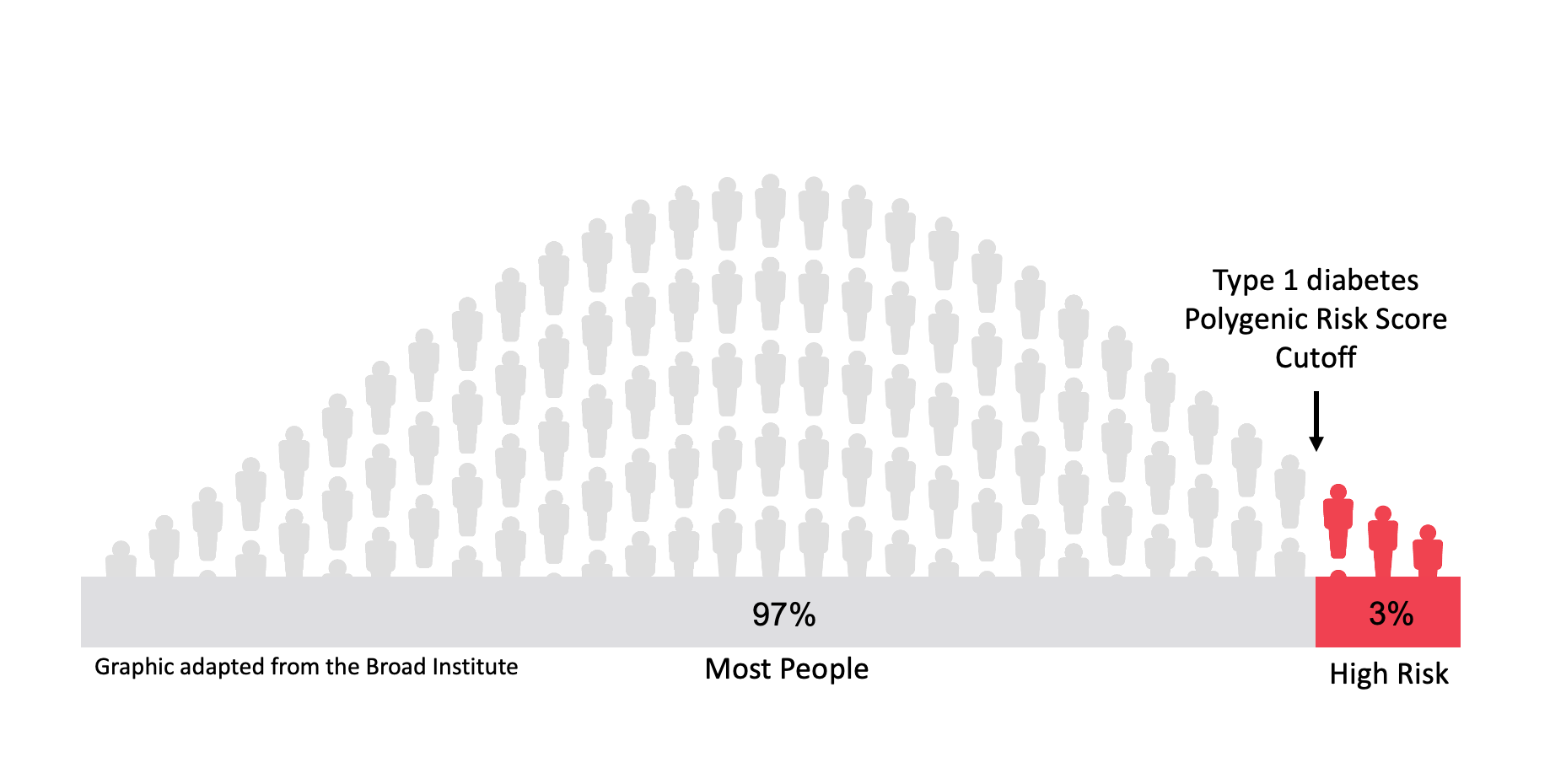Type 1 Diabetes (Children): Understanding Your Results
What is Type 1 Diabetes?
- Type 1 diabetes is a chronic (meaning it never goes away) disease of the immune system. It affects the pancreas – an organ found near the stomach. The pancreas makes insulin, which turns sugar into energy. With type 1 diabetes, the body cannot make enough insulin and sugar builds up in the bloodstream. This leads to high blood sugar levels (or hyperglycemia). If not treated, this can cause serious damage to the body. Type 1 diabetes is usually diagnosed in children, teens, and young adults, but it can develop at any age.
What does high risk for type 1 diabetes mean?
- Your child’s risk assessment shows a high risk for type 1 diabetes. Your polygenic risk score (PRS) is in the top 3%. This means that your child may have a higher genetic risk for type 1 diabetes than 97 out of 100 people.

- On average, about 0.3% of people, or 3 out of 1,000 people, will get type 1 diabetes in their lifetime.
- In African Americans a high risk score for type 1 diabetes means that your child’s risk is at least 12 times higher than a child not in the high risk category.
- In Caucasian or white Americans a high risk score means that your risk is at least 20 times higher than a child not in the high risk category.
- In Hispanic/Latino and Asian Americans we know that a high risk score means a higher chance of developing type 1 diabetes but the data are not available to say how much higher that risk may be.
- In African Americans a high risk score for type 1 diabetes means that your child’s risk is at least 12 times higher than a child not in the high risk category.
- This result does not mean that your child has type 1 diabetes or that your child will definitely develop type 1 diabetes in their lifetime.
- This PRS was created using genetic information from large research studies of people with European, Hispanic/Latino, and African descent. We outline how this score was created below:
- DNA differences in each population were picked up that are linked to type 1 diabetes risk
- These DNA differences were combined into a single score, called a “trans-ancestry PRS”
- This score was tested using genetic information from other research studies with different populations and was accurate
- DNA differences in each population were picked up that are linked to type 1 diabetes risk
- Larger research studies are needed in people of Hispanic/Latino and Asian descent to provide a risk range for this population – see the Broad PRS report attached.
What can you do to lower your risk for type 1 diabetes?
- Not everyone who is at high risk for type 1 diabetes will get it. There is nothing that can be done to prevent type 1 diabetes, but the disease can be managed with care. Being aware of the symptoms can help you and your doctor to catch the disease early.
- Symptoms of type 1 diabetes can develop in just a few weeks or months and can be severe. Speak with your doctor right away if you have any of these symptoms:
- Urinate (pee) a lot, often at night
- Are very thirsty or hungry
- Lose weight without trying
- Have blurry vision
- Have numb or tingling hands or feet
- Feel very tired
- Have very dry skin
- Have sores that heal slowly
- Have more infections than usual
- Have nausea, vomiting, or stomach pains
- Healthy diet and regular exercise also help control blood sugar levels.
- To test for type 1 diabetes, your doctor may order lab tests, including blood and urine tests. Your doctor should also test blood sugar levels. If these tests find you or your child has diabetes, treatment must begin right away.
- Discuss medications and other treatments with your doctor or other care provider.
What are your next steps?
- You should share these results with your child’s doctor(s) or other healthcare provider to discuss actions to be taken to lower your child’s risk.
- You may also want to share your results with your family members.
- Your child’s results will be uploaded to your child’s electronic health record for you to review and will be available to your child’s doctor(s) and other healthcare providers.
- If you have any questions about your results, please contact the study team at your institution. You can find this contact information on the cover page of the GIRA.
